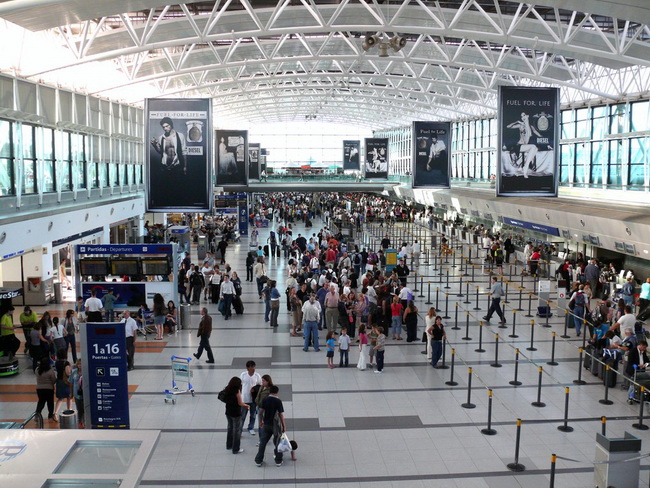Temporary structures essentially deliver what their name promises, a short to long term building solution for use across a variety of purposes.
With more of us flying more often every single year, it’s understandable that our major airports find themselves under more strain than ever. Of course, to develop extra capacity in a facility that’s used day in, day out, 24/7, you’ve got quite a challenge on your hands, which is why airports have increasingly been turning to temporary structures over the past few years to support their services.
The question is, what exactly are they? And how are they making a key difference in the world of commercial aviation?
What is a temporary structure?
Temporary structures essentially deliver what their name promises, a short to long term building solution for use across a variety of purposes. Temporary structures can range from anything from a short-term warehouse set up to support the storage requirements of a business in peak time through to extra facility provisions for major sporting events.
They essentially allow a business an immediate solution to an immediate problem, without having to commit to a costly permanent build. In the case of commercial airports, temporary terminals can be built to offer support with passenger flow.
What benefit do they pose to airports?
Temporary structures pose the same fundamental benefits to airports that they do most other businesses, but can be tailored to offer more specific advantages:
- Rapid delivery and installation times
- Fully equipped with all typical airport facilities
- Flexible dimensions
- Fully sustainable
- Operational from months to years
- Fully insulated
- Offers the aesthetic of a permanent building.
Typical scenarios where a temporary structure can benefit an airport would be:
- The airport has outgrown its current capacity and resources
- The airport is heading into peak season
- A stop gap solution is needed while renovations or permanent expansion take place
- For expansion where a permanent facility isn’t required
- To cover damage to permanent facilities from the likes of fire or other emergency scenarios
As you’d suspect, temporary structures are significantly cheaper and less time-consuming to construct than permanent alternatives, creating a cost-effective and speedy solution for airports.
Case studies
Temporary building specialists Neptunus are one of the premier names within the industry and have a number of recent case studies involving their temporary terminals which can help us to understand their merit.
Amsterdam Schipol
Neptunus created a temporary departures hall for Amsterdam Schipol airport to help support record growth in traveller numbers within the Schengen zone. Opened in April 2017, the hall is 3,800m² and capable of processing as many as two million passengers per year. It will remain in action until the construction of Schipol’s new terminal in 2023, with the airport’s new pier having been completed in 2019.
Berlin Schönefeld
The start of 2019 saw the opening of a temporary terminal building for Berlin Schönefeld. Capable of housing up to 1,200 passengers, the 2,200m² facility took nearly four months to complete, with Neptunus delivering the entire project. The terminal will remain in place for up to two years while renovation work is carried out.
Magdeburg Cochstedt
Opened in 2011, Germany’s Magdeburg Cochstedt International commissioned Neptunus to create a semi-permanent, 90,000m² terminal to support a surge in passenger numbers and augment their current terminal, which was incomplete after a loss of funds. Featuring food and drink outlets, luggage carousels and a customs area, the terminal played a key part in establishing the airport’s commercial operations from the off.
Within those three case studies alone, you can see the diverse use and reasoning behind operating a temporary terminal. As temporary structures become a more fashionable solution for airports looking to boost operational efficiencies, there’s a good chance you might find yourself stood in one the next time you travel – although you might not even notice.





























































































































































































































